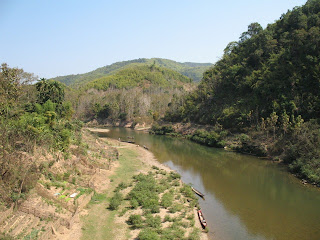Laos, the most bombed country on earth! For ten years between 1963 and 73, 2 million tonnes of bombs were dropped by the US Air force.
During the Indo-China war, Laos was recognised as a neutral country with no foreigner forces on its soil. But the Vietnamese used Laos as a spring board for for attacking the french colonist in the first Indo-China war and never withdrew.
By 1970, some 75,000North Vietnamese troops was deployed in Laos supplying communist units in Cambodia and South Vietnam. By then South Vietnam was under US control with the aim of halting the Communism in Indo-China.
US interventions in Laos initiated with the setting up and training of guerrilla forces of the Hmong Hill Tribe but was unable to halt the flow of weapons and troops from North Vietnam to the south along the Ho Chi Minh Trail. So the carpet bombing of Laos to stone age started. By '73 nearly 600,000sorties had flown over Laos by US forces dropping on average of one planeload of bombs every 8 min, 24 hrs a day for 9 years! By the end of the war 2 million tons was dropped, which is greater than the total bombs dropped by the US forces over Europe in the WW2 and equates to in the half a ton of bombs per every Laos citizen.
Further more 30% of the bombs did not explode on the impact and continue to kill peasants all over the country daily.

The USAF sorties were not limited to bombs alone, hundred of thousands of tonnes of highly toxic Agent Orange (defoliage chemical) was also sprayed over Laos in order to facilitate bombing, which continue to prevent the reforestation of large portions of country side.

However by the end of Indo-China war (which had started of as freedom from the French), Vietnam, Laos and Cambodia have all fallen to Communist forces supported by either the USSR or China and were to suffer for decades to come.
Los lugares donde se hallan las jarras tambien son testigos del sufrimiento del pais durante la guerra de Indo-China.



















































